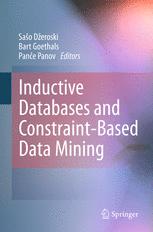

Most ebook files are in PDF format, so you can easily read them using various software such as Foxit Reader or directly on the Google Chrome browser.
Some ebook files are released by publishers in other formats such as .awz, .mobi, .epub, .fb2, etc. You may need to install specific software to read these formats on mobile/PC, such as Calibre.
Please read the tutorial at this link: https://ebookbell.com/faq
We offer FREE conversion to the popular formats you request; however, this may take some time. Therefore, right after payment, please email us, and we will try to provide the service as quickly as possible.
For some exceptional file formats or broken links (if any), please refrain from opening any disputes. Instead, email us first, and we will try to assist within a maximum of 6 hours.
EbookBell Team

5.0
68 reviewsThis book is about inductive databases and constraint-based data mining, emerging research topics lying at the intersection of data mining and database research. The aim of the book as to provide an overview of the state-of- the art in this novel and - citing research area. Of special interest are the recent methods for constraint-based mining of global models for prediction and clustering, the uni?cation of pattern mining approaches through constraint programming, the clari?cation of the re- tionship between mining local patterns and global models, and the proposed in- grative frameworks and approaches for inducive databases. On the application side, applications to practically relevant problems from bioinformatics are presented. Inductive databases (IDBs) represent a database view on data mining and kno- edge discovery. IDBs contain not only data, but also generalizations (patterns and models) valid in the data. In an IDB, ordinary queries can be used to access and - nipulate data, while inductive queries can be used to generate (mine), manipulate, and apply patterns and models. In the IDB framework, patterns and models become ”?rst-class citizens” and KDD becomes an extended querying process in which both the data and the patterns/models that hold in the data are queried.